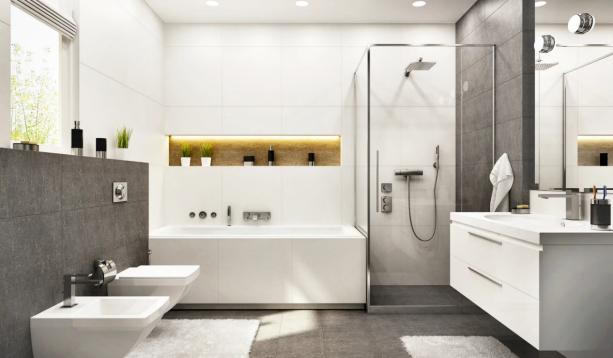
IP Rating – What Is It and Why Is It Important?
What is an IP Rating?
IP is an acronym for "Ingress Protection". It measures an item’s protection against solid objects (dust, sand, dirt, etc.) and liquids. The IP rating consists of 2 numbers. The first number refers to protection against solid objects (such as dust), and the second number refers to protection against liquids.
What does IP stand for?
IP ratings exist to provide consumers with more detailed information than general terms like “waterproof” and “dustproof.” The IP rating system begins with the letters IP and is followed by two numbers:

The two numbers give you information about the protection level. A higher number means greater protection against solids or liquids.
The first number (0-6) refers to protection against penetration by solid objects from fingers all the way down to dust.
The second number (0-8) refers to the level of liquid resistance. This can range from dripping to constant soaking.
Understanding IP ratings
1st Digit- Solid
Rating |
Size of object |
Level of Protection |
|
0 |
No Protection |
No Protection |
|
1 |
Over 50mm in diameter |
Protection from any large surface of a human body but not deliberate tampering or force. |
|
2 |
Over 12.5mm in diameter |
Protection from fingers or similar sized objects. |
|
3 |
Over 2.5mm in diameter |
Protection against tools, thick wires etc. |
|
4 |
Over 1mm in diameter |
Protection against screws and most wires. |
|
5 |
Dust protected |
Protection against dust. The dust will need to enter the casing in large amounts to interfere with operation. |
|
6 |
Dust tight |
Impossible for dust to enter and interfere with operation. |
2nd Digit-Liquid
Rating |
Description |
Level of Protection |
|
0 |
No Protection |
No Protection |
|
1 |
Dripping water |
Protected from falling drops of water. |
|
2 |
Dripping water when tilted up to 15 degree angle |
Vertical dripping water will not causes damage when fixture is tilted at an angle up to 15 from its usual position. |
|
3 |
Spraying water |
Protection against water falling in spray form at any angle up to 60 degree angle. |
|
4 |
Splashing water |
Protected against water splashing from any angle. |
|
5 |
Water jets |
Protected against water jets from any angle. |
|
6 |
Powerful water jets |
Powerful jets from any direction will cause no damage. |
|
7 |
Immersion up to 1 metre |
Products can be submerged up to 1m in water for up to 30 minutes. |
|
8 |
Immersion beyond 1 metre |
The light fixture is suitable for continuous immersion in water under conditions specified by the manufacturer.This usually indicates the LED fixture is hermetically sealed, however, some water may enter the fixture but won’t be detrimental to light function. |
For example:
- IP65=Water resistant. “Protected against water jets from any angle”. With an IP65 rating, the LEDs can be used in an outside setting and are waterproof but they are not suitable to be submerged. Only an IP68 can be submerged in water.
- IP67=Water resistant plus. “Products can be submerged up to 1m in water for up to 30 minutes.”*Do NOT submerge IP67 LED lights for extended periods.
- IP68=An IP68 ratingis hermetically sealed and suitable for continuous immersion in water.
The right IP rating for your needs
The IP rating is an important consideration when selecting LED lighting products for any project. The IP rating reflects the suitability of the luminaire for specific environmental condition in both indoor and outdoor installation. Different uses require different IP ratings. Generally, low IP ratings are normally fine for indoor use. Outdoor use will require a higher IP rating.
1.Low IP ratings
Lower IP ratings are only suitable for indoor use in places where there won’t be much exposure to water or dust. These are generally indoor living areas such as bedrooms, living rooms, kitchen room, study room and offices

Most of YUJILEDS indoor light strips have an IP rating of 20, which means they are suitable for all indoor dry applications use and are resistant to prying fingers.
2.High IP ratings

Higher IP ratings will work best in areas that require lights to be exposed to debris, water, dust and wet conditions. Floodlights, industrial and factory settings often require high IP ratings. If there is any potential for contact with dust or liquid, it’s best to stay on the safe side and choose a high IP rating.
IP ratings of 65 and above are safe to be considered weather-proof, suitable for outdoor use (and also great for bathrooms).

The above introduction to the IP ratings provides some references for you when purchasing LED products for different scenarios. If you are still in any doubt as to the IP rating required for a particular application, please do not hesitate to contact us for further advice and assistance when planning your purchase.

Leave a comment